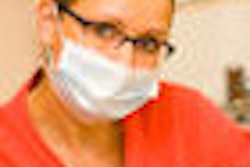
Millions of Australians are financially locked out of the country's dental health system, undermining their ability to gain and keep employment and costing the economy more than $1 billion annually, according to a report released December 8 by the advocacy group Brotherhood of St. Laurence.
The Brotherhood of St. Laurence was established in the 1930s to eliminate poverty in Australia.
The report analyzed existing data to estimate the disease burden of untreated dental conditions and the resulting economic burden. The report's authors, Jeff Richardson, PhD, a professor of economics and the foundation director of the Centre for Health Economics at Monash University and Bronwyn Richardson from Campbell Research and Consulting, found that the direct and indirect costs to the economy are significant.
Among the report's findings:
- The direct and indirect costs to the Australian economy of poor dental health are between $1.3 billion and $2 billion annually.
- Hospital admissions from dental conditions are the largest category of preventable acute hospital admissions, costing the health system $223 million each year.
- At least 1 million work days and at least 600,000 school days are lost each year because of poor dental health, costing the economy at least $660 million in lost productivity.
- Children in the lowest socioeconomic areas had 70% more decay in their teeth than children in the highest socioeconomic areas.
- Adults on the lowest incomes were almost 60 times more likely to have no teeth than those on the highest incomes. While the prevalence of people without teeth has fallen to almost zero (0.3%) in the top 25% of incomes, 17.3% of adults in the lowest 25% of incomes had no natural teeth.
- Indigenous people were twice as likely to have untreated decay compared with nonindigenous people.
Tony Nicholson, executive director of the Brotherhood, said the costs of poor dental health were being borne by those least able to afford them.
"This report is valuable in terms of putting numbers on the economic costs and the disease burden, but in our line of work we see the direct impact on people's lives," he stated in a press release. "Poor dental health can cause pain that impairs eating and speaking, and it can disfigure people's faces, eroding their confidence, undermining their employability, and excluding them from mainstream economic and social life."
Findings from the report suggest that the costs of increasing spending on dental health would be substantially offset by productivity gains and a reduction in the costs of healthcare from preventable oral health conditions.
The Brotherhood is calling for a new approach to dental care that would include the following:
- Improving affordability and access to dental care for disadvantaged people as a matter of urgency.
- Developing a plan and a timetable for introducing a universal dental scheme.
- Piloting a universal dental scheme within a particular area for a specified period of time, accompanied by a cost-benefit analysis.
The availability of dental care is constrained by a shortage of dental health practitioners. According to the advocacy group, this should be addressed in the following ways:
- Introducing measures that attract private dentists to do some work in the public system.
- Expanding the numbers of oral health practitioners (dental health practitioners other than dentists) who can add to the dental health workforce.
- Prioritizing access to preventive dental health services to stop oral health deteriorating and minimize the development of other diseases that are linked to poor oral health, including cardiovascular disease and stroke.

.hpp4JFpXkV.png?crop=focalpoint&fit=crop&fp-x=0.5&fp-y=0.5&h=100&w=100&auto=format%2Ccompress&q=70)





.hpp4JFpXkV.png?crop=focalpoint&fit=crop&fp-x=0.5&fp-y=0.5&h=167&w=250&auto=format%2Ccompress&q=70)











